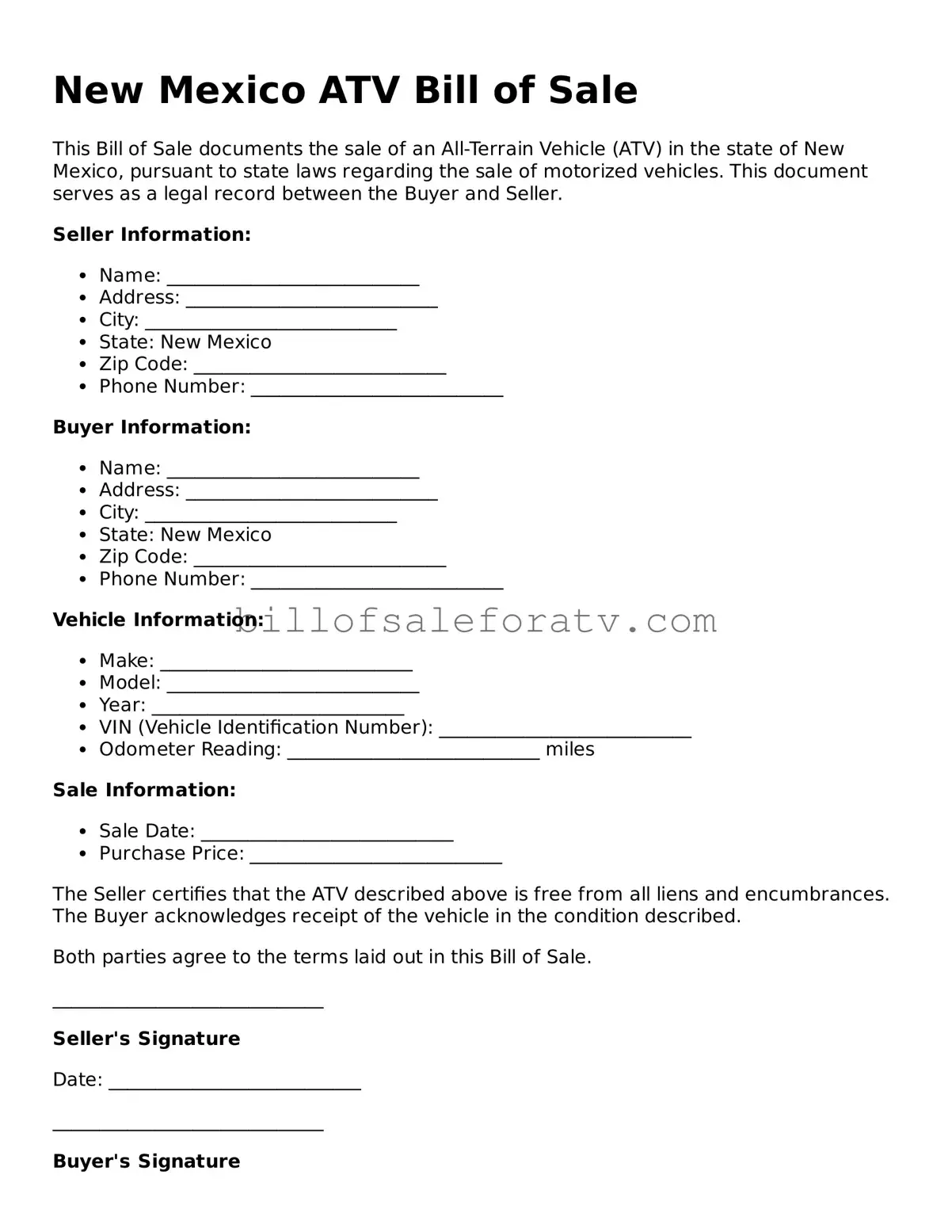Detailed Steps for Writing New Mexico ATV Bill of Sale
After obtaining the New Mexico ATV Bill of Sale form, you will need to carefully fill it out to ensure that all necessary information is accurately recorded. This document will serve as proof of the transaction between the buyer and seller, so accuracy is key. Follow these steps to complete the form properly.
- Start with the date: Write the date of the sale at the top of the form.
- Seller's information: Fill in the seller's full name, address, and contact information. Make sure to include the city, state, and zip code.
- Buyer's information: Enter the buyer's full name, address, and contact information, also including the city, state, and zip code.
- ATV details: Provide specific information about the ATV being sold. This includes the make, model, year, Vehicle Identification Number (VIN), and any other relevant details.
- Sale price: Clearly state the sale price of the ATV. This amount should be written in both numerical and written form to avoid any confusion.
- Odometer reading: If applicable, record the odometer reading at the time of sale. This is important for both parties.
- Signatures: Both the seller and buyer must sign and date the form. This indicates that both parties agree to the terms outlined in the document.
- Notarization (if required): Depending on local laws, you may need to have the document notarized. Check if this step is necessary for your transaction.
Once the form is completed, both parties should keep a copy for their records. This ensures that there is a clear understanding of the transaction and protects both the buyer and seller in the future.
